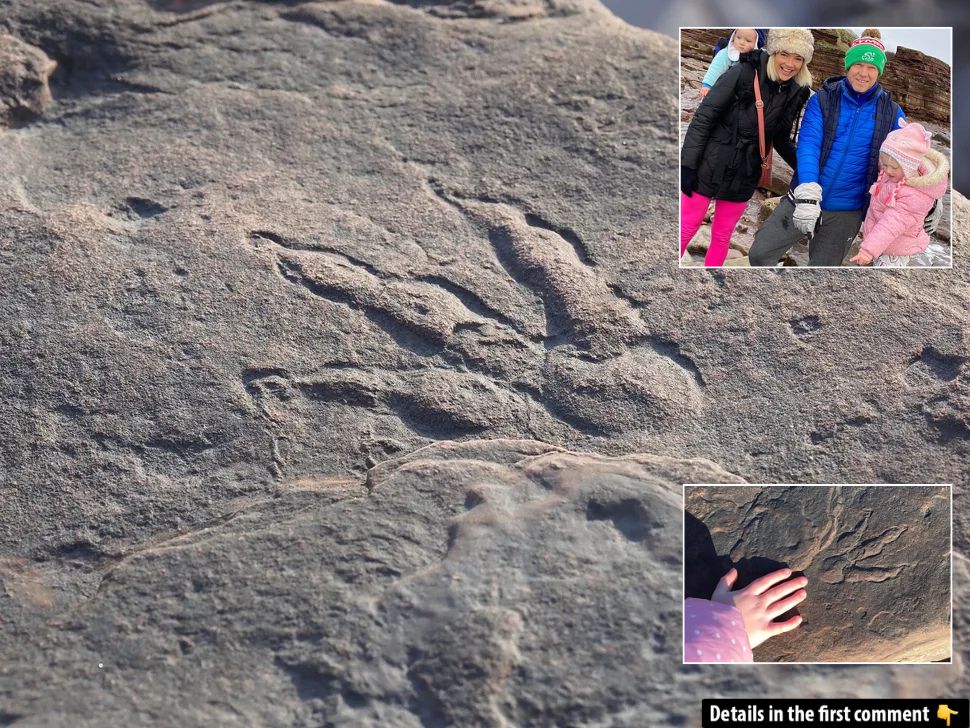A seemingly ordinary walk along the beach turned into an extraordinary paleontological discovery for 4-year-old Lily Wilder and her father, Richard. While strolling along Bendricks Bay, near Barry, Wales, the young girl spotted something unusual—what experts would later describe as the finest dinosaur footprint ever found in the UK in a decade. At first, Lily’s family wasn’t sure what to make of the fossilized imprint, but after consulting with paleontologists, it became clear that this was no ordinary rock carving. This perfectly preserved 215 million-year-old footprint is giving scientists valuable new insight into early dinosaurs’ lives, particularly how they moved and interacted with their environment.
The Discovery of the 215 Million-Year-Old Dinosaur Footprint
Bendricks Bay, known for occasional dinosaur discoveries, became the site of a remarkable find. What makes the discovery even more remarkable is that it belongs to a species not yet identified by scientists. The print is classified as a “grallator,” a type of footprint left by a three-toed theropod, and the details of the print, including the clarity of the footpads and claws, have provided experts with the best-preserved specimen found in Britain in the past decade.

The fossil was discovered while the Wilder family was out on a routine outing, but the family’s uncertainty about its authenticity was understandable. Lily’s mother, Sally Wilder, initially thought the print might have been a modern carving, possibly created by an artist. However, upon further inspection by experts from Archaeology Cymru and the National Museum of Wales, it became clear that the fossil was genuine. The track’s pristine preservation and its undeniable resemblance to previous finds in the region convinced paleontologists of its authenticity. This discovery brings significant value to the study of early dinosaurs and enriches the paleontological record.
Video
Watch the video to see a 4-year-old girl discover a dinosaur footprint on a Welsh beach! Don’t miss this incredible find and the excitement surrounding it.
The Dinosaur Behind the Footprint
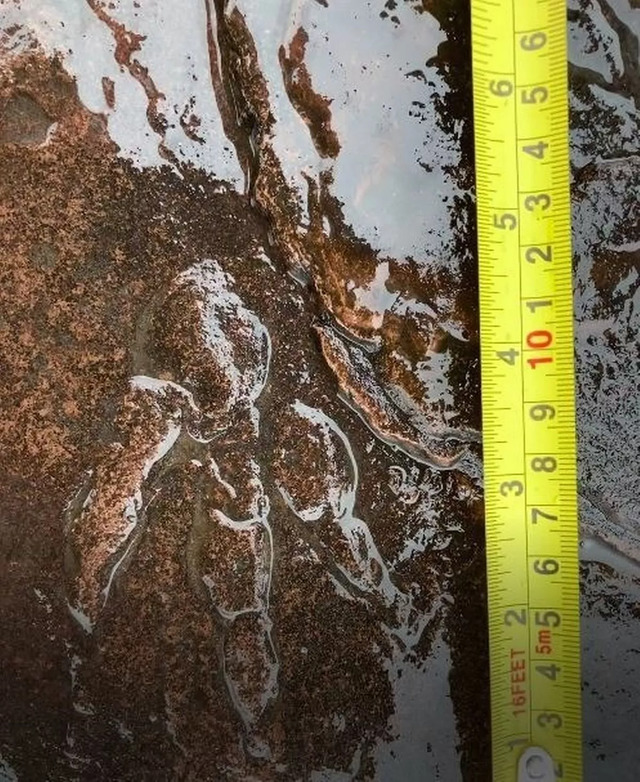
The dinosaur responsible for this footprint is thought to have been a slender, bipedal predator that roamed the land approximately 215 million years ago. This creature likely fed on small animals, insects, and other smaller creatures that lived alongside it in the Triassic landscape. While the exact species of dinosaur that left the print remains unidentified, scientists have speculated that it could be similar to known species like Coelophysis, which was one of the earliest theropods and lived in what is now North America.
The size and shape of the dinosaur’s foot provide valuable information about its movement and lifestyle. The three-toed footprint suggests the creature was agile and adept at running, traits typical of many early theropods. Scientists are excited by the level of detail captured in the print, particularly the visible claws and footpads, which give insight into how these dinosaurs walked and hunted.
The Importance of the Find
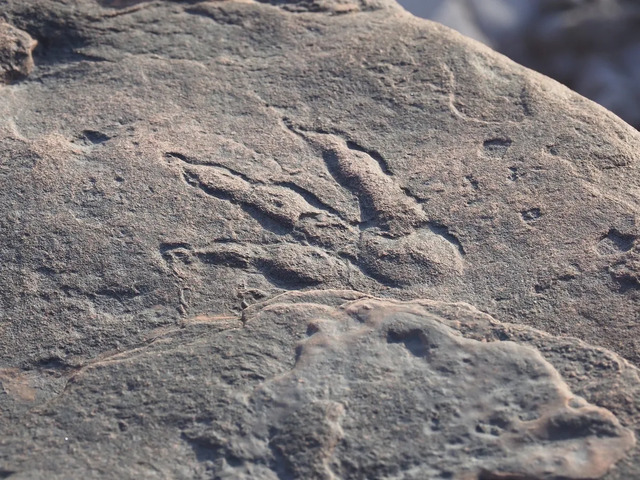
This dinosaur footprint is one of the most significant finds of its kind in recent years. Experts have hailed it as the finest preserved example of a 215-million-year-old dinosaur print found in the UK in the past decade. Its exceptional preservation means it holds the potential to answer numerous questions about the anatomy and behavior of early dinosaurs.
For paleontologists, every discovery of this nature is like a puzzle piece that helps reconstruct the world in which these creatures lived. The track offers a rare glimpse into the locomotion of dinosaurs during the early stages of their evolution. By studying the print’s details, scientists can hypothesize about the movement patterns and physical characteristics of the animal, giving a clearer picture of how it interacted with its environment.
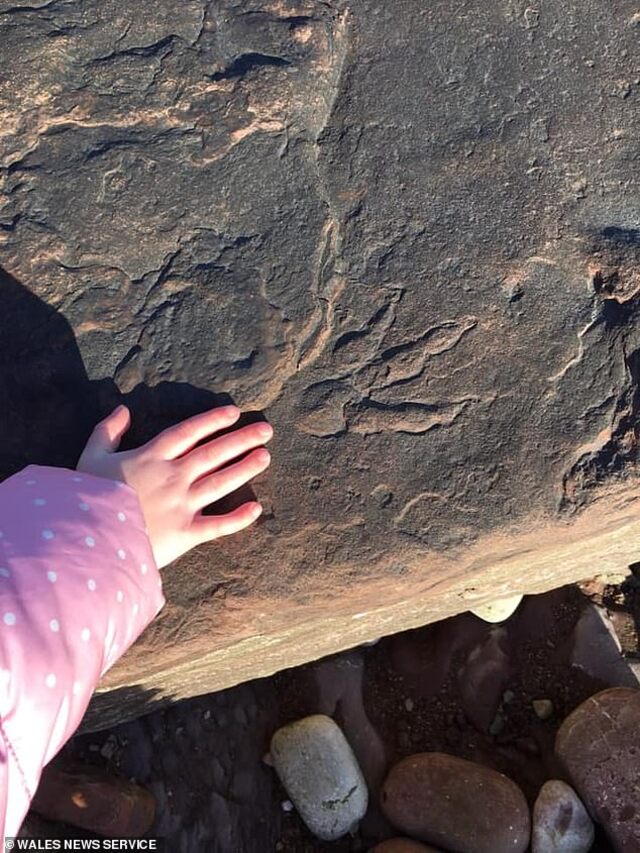
Additionally, the discovery contributes to the broader understanding of the Triassic period, a time when dinosaurs were still evolving and diversifying. This fossil serves as an important reminder of how rich and diverse the history of life on Earth is, and how even a single footprint can provide vital clues to understanding that history.
How the Discovery Was Handled
After the find was confirmed as a genuine dinosaur footprint, the Wilder family worked with archaeologists to ensure the specimen was safely removed for study. The track was carefully extracted from the rock at Bendricks Bay and transported to the National Museum of Wales for further analysis and preservation.
The importance of the footprint meant that the fossil had to be handled with great care. Special permissions were required from Natural Resources Wales, the government body responsible for regulating environmental conservation, to ensure the removal and transportation of the specimen complied with conservation laws. The track is now being studied by experts, who hope to learn more about early dinosaur life and movements.
The Fascination with Dinosaurs
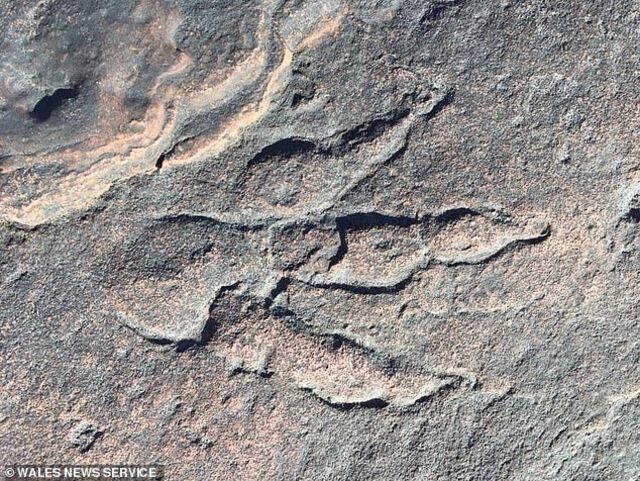
For Lily, this discovery has sparked a newfound interest in dinosaurs. According to her family, she has been playing with dinosaur toys nonstop ever since, and her excitement about the find continues to grow. The significance of this discovery goes beyond just adding another fossil to the record—it has ignited the curiosity of the next generation of paleontologists. Lily’s enthusiasm for dinosaurs and her involvement in such an important discovery may inspire her to pursue a future in science, and who knows—her grandchildren may one day visit the very fossil she discovered in a museum.
The story of Lily Wilder and her family highlights the importance of public engagement with archaeology. Many people walk by significant sites without even realizing the history beneath their feet, but with a keen eye and curiosity, extraordinary finds can still be made. This discovery serves as a reminder that the natural world is full of hidden wonders waiting to be uncovered.
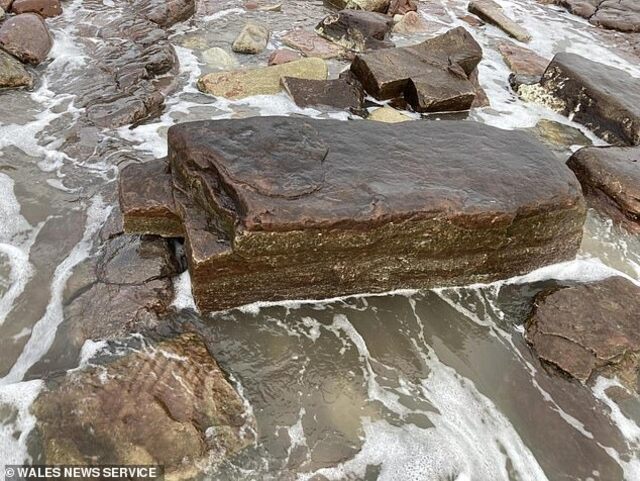
Video
Watch the video to learn how dinosaur footprints survived 65 million years! Don’t miss this fascinating look at how these ancient impressions were preserved over time.
Conclusion: A Legacy for the Future
The dinosaur footprint discovered by 4-year-old Lily Wilder has proven to be a vital addition to the paleontological record, shedding light on the lives of early dinosaurs and offering new insights into how these creatures moved and behaved. For scientists, it provides critical evidence of how early theropods navigated their environments, and for the general public, it serves as an exciting reminder of the wonders of the past that continue to shape our understanding of Earth’s history.
As Lily’s discovery continues to be studied and preserved, it’s clear that this fossil will remain an important part of the scientific community’s research for years to come. It is a perfect example of how anyone, even a young child on a family walk, can play a part in making discoveries that change our understanding of the world.
The legacy of this find, and the wonder it has inspired in young minds, is sure to echo through future generations, cementing the importance of paleontological discoveries and fostering a deep connection with Earth’s ancient past.
